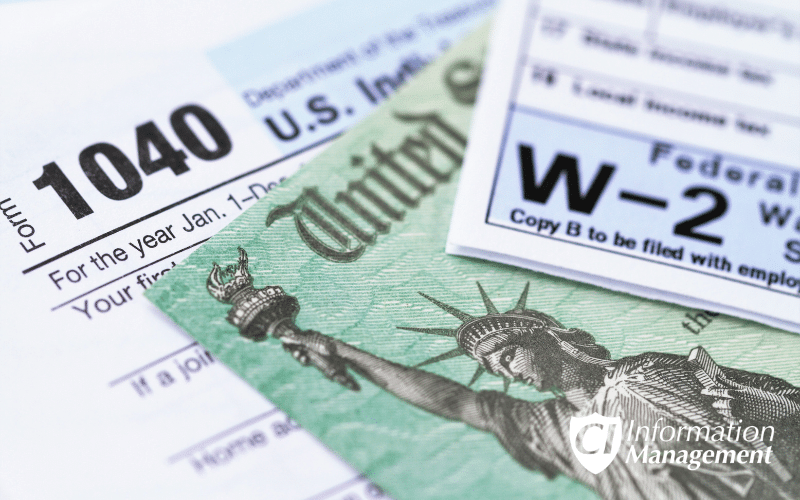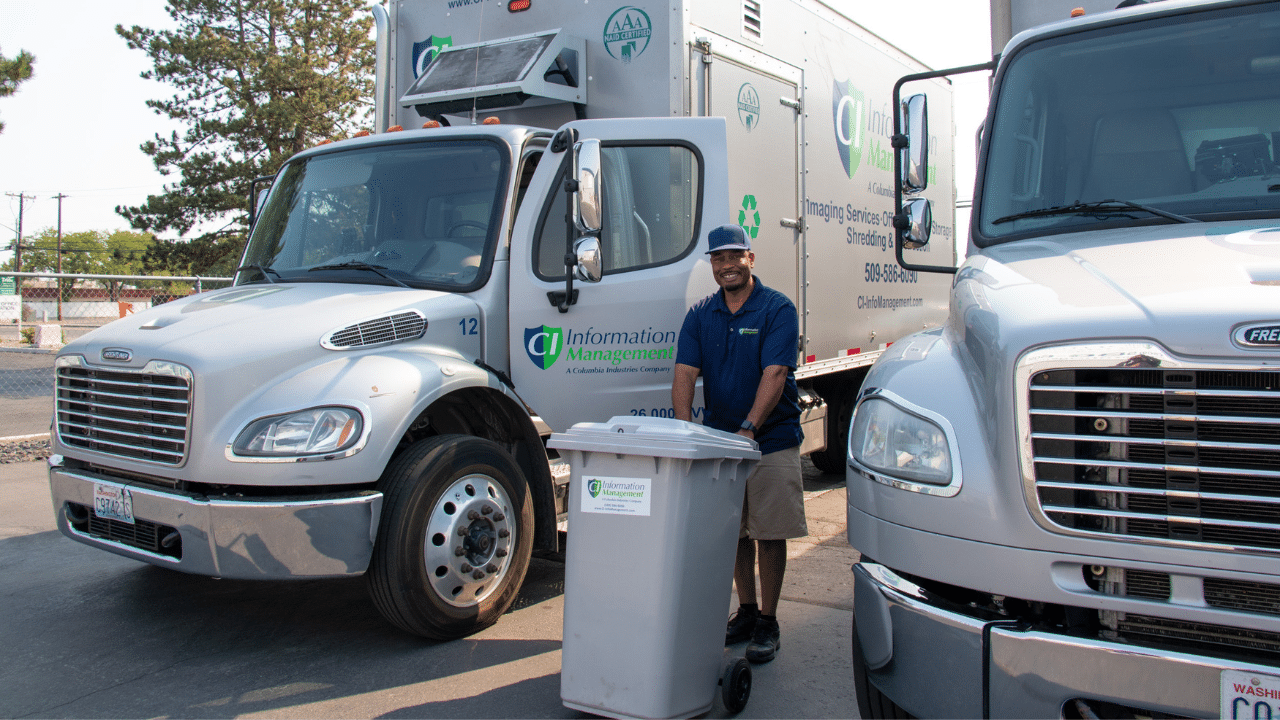
What does a file purge accomplish?
- Removes redundant files. Files and documents sometimes get duplicated and multiple copies end up in the same file system. Thinning out duplicate files will maximize your file room’s capacity.
- Removes outdated files. Your documents have retention dates required by law. By knowing the correct retention periods for your specific files, you may find some of them have surpassed their final disposition date and need to be securely shredded. Reducing clutter will help make tax season much easier.
- Frees up space. The more unnecessary files you remove, the more space you will have, which can ultimately save your company the cost of using valuable floor space or renting additional space to store files.
- Helps you get organized. In the blur of daily tasks, files sometimes don’t placed/replaced in the correct location. Some may end up on top of the file cabinet, creating a data breach risk. During a purge, take the time to put files you’re keeping where they belong. Combine files that belong together, reducing clutter and making your file room easier to navigate during tax season and year-round.
- Re-evaluate your filing system. Is it effective? Does your administrative team know and follow the same filing procedures? Take the opportunity of a file purge to establish or strengthen your filing procedures, which will benefit the organization by increasing efficiency, reducing frustration, and improving morale.
What shouldn’t I purge?
- Past tax returns. Even though they have a defined retention period, a qualified tax advisor would suggest keeping tax returns indefinitely so you have proof should the IRS conduct an audit.
- Sales tax returns. Records that may determine any tax for which a business may be liable in the state of Washington should be preserved for a period of five (5) years.
- Employment records. Typically, personnel records should be maintained for a minimum of three (3) years beyond the last day of employment. Payroll, employee tax records, and unclaimed payments should be kept indefinitely.
- Business property records. These must be kept for seven years past the date of ownership since they are required when determining the basis of a sale and any related gain or loss.
How do I securely dispose of files?
NAID AAA Certified shredding is the most secure way to destroy purged files. Choose a local, reputable shredding company with NAID AAA Certification to ensure your information cannot be reconstructed after shredding and request a Certificate of Destruction to prove your compliance with data privacy laws in case of an audit. A responsible shredding company should also recycle 100% of their shredded paper.
CI Information Management is a NAID AAA Certified shredding company serving Southeastern and Central Washington State and Northeastern Oregon. We offer a full range of shredding services including one-time file purges. We securely shred all of your sensitive documents and provide a Certificate of Destruction upon completion. This tax season, give us a call at 509-586-6090 or complete the form on this page to arrange on-site shredding of your files. Our friendly shredding experts are standing by!




